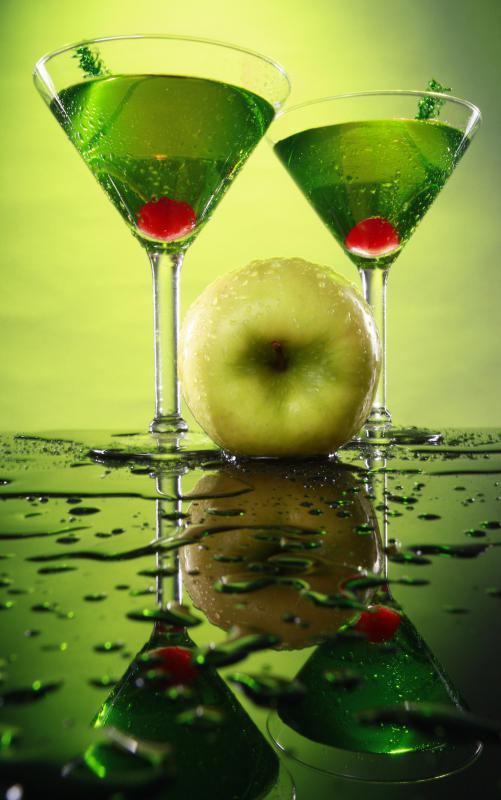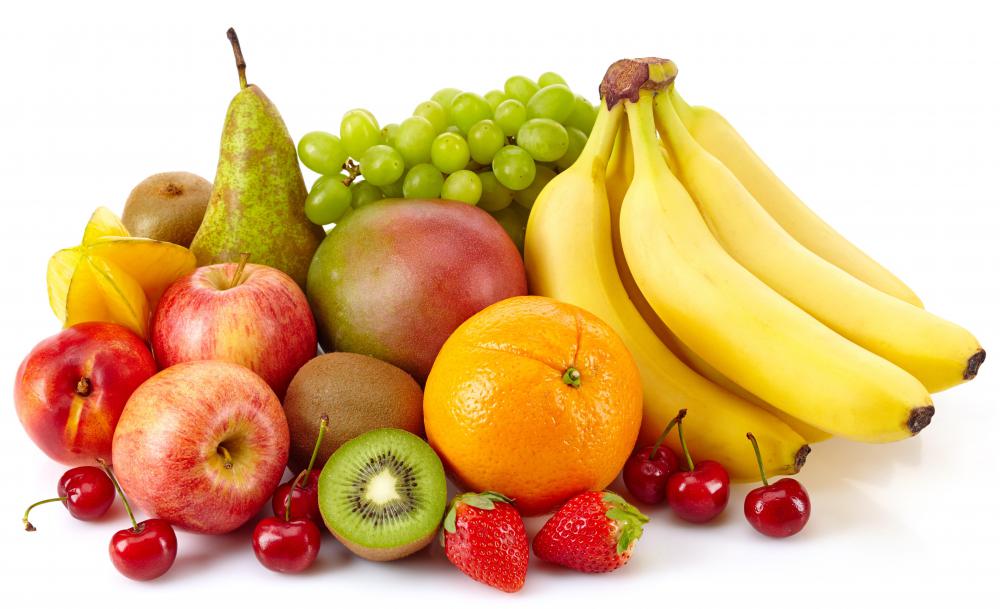At DelightedCooking, we're committed to delivering accurate, trustworthy information. Our expert-authored content is rigorously fact-checked and sourced from credible authorities. Discover how we uphold the highest standards in providing you with reliable knowledge.
What Is Fermented Fruit?
Fermented fruit is a type of food prepared by using yeast to convert sugar compounds in the fruit to alcohols. Both fresh fruit and canned fruit can be fermented, and are often looked upon as an intermediate stage in making various types of fruit-based wines or other alcoholic drinks. The process of fermenting fruit has been conducted by various cultures for many centuries, but one of the more enduring forms of the practice is the making of Rumtopf, a German and Austrian dessert which is a mixture of fermented fruit and rum.
The benefits of fermentation throughout history have been that it both preserves food and enriches its nutrient content. The alcohol content of fermented food and its general alkaline nature inhibit the growth of bacteria, and fermentation can break down indigestible compounds into vitamins and essential amino acids that can't be otherwise produced by the human body. Fermenting fruit is also seen as a simple way to diversify the diet, as it is often used as a multi-purpose dessert topping or as a range of different types of flavorings for alcoholic beverages. Before refrigeration or other modern means of preserving foods, fermented fruit was also a way of storing a prepared food that could be eaten without the need for additional cooking.

Making fermented fresh fruit is a fairly straightforward process. The fruit can be anything from various types of berries that grow on bushes to peeled and sliced fruit from trees such as cherries, peaches, or pears. The seeds or pits should be removed first if possible, though this is impractical with berries such as blackberries or strawberries. Syrup is first made by mixing refined white sugar, water, and baking yeast, and then letting the mixture sit for around four days to begin the fermentation process. The desired fruit is then added so that it is infused by the fermenting syrup.

Fermenting canned fruit follows a similar process except that the liquid has to be drained from the can first and the fruit transferred to a canning jar. Canned fruit should be fermented for up to three weeks in a cool, dark place, and it is considered to be better tasting the longer it is allowed to ferment. Frozen fruit can also be fermented using the same guidelines as canned fruit after it has been allowed to thaw out. Traditional Rumtopf fermented fruit is made by adding a chosen type of alcohol such as rum to the mixture, as well as other types of alcohol such as wine or brandy.

Two of the main points to focus on when making fermented products are that the yeast has to be at room temperature to properly work, and that the container has to have an opening and some space at the top, as the mixture will expand as the yeast works and releases carbon dioxide gas during fermentation. Yeast also feeds on sugar from the fruit itself or the white sugar syrup, and, if gas bubbles are being produced, it is active. If gas bubbles stop appearing before the fermented fruit has reached a desirable stage, then either sugar or fresh yeast should be added to the mixture to restart the process. After the fruit has reached a flavor level that is desired, it can be stored in a refrigerator for an extended period of time, but this will inhibit the function of any remaining yeast. The quality of fermented fruit will improve at room temperature with active yeast, and can be stored and still be edible for at least a year.
AS FEATURED ON:
AS FEATURED ON:














Discussion Comments
A tale from my college days: the popular party drink was a beverage called "hunch punch." It consisted of fruit, citrus soda, fruit juice, orange juice concentrate and Everclear 151 (pure grain alcohol). One soaked the fruit in the 151 for at least two or three days before the party -- preferably a week. Then, the other ingredients were combined in a large container (I've heard of it being done in a clean kiddie pool), and the fruit added. The stuff had a kick like a mule.
I was never in the cool crowd, so I was never at a party where this was served, but I heard stories.
Post your comments